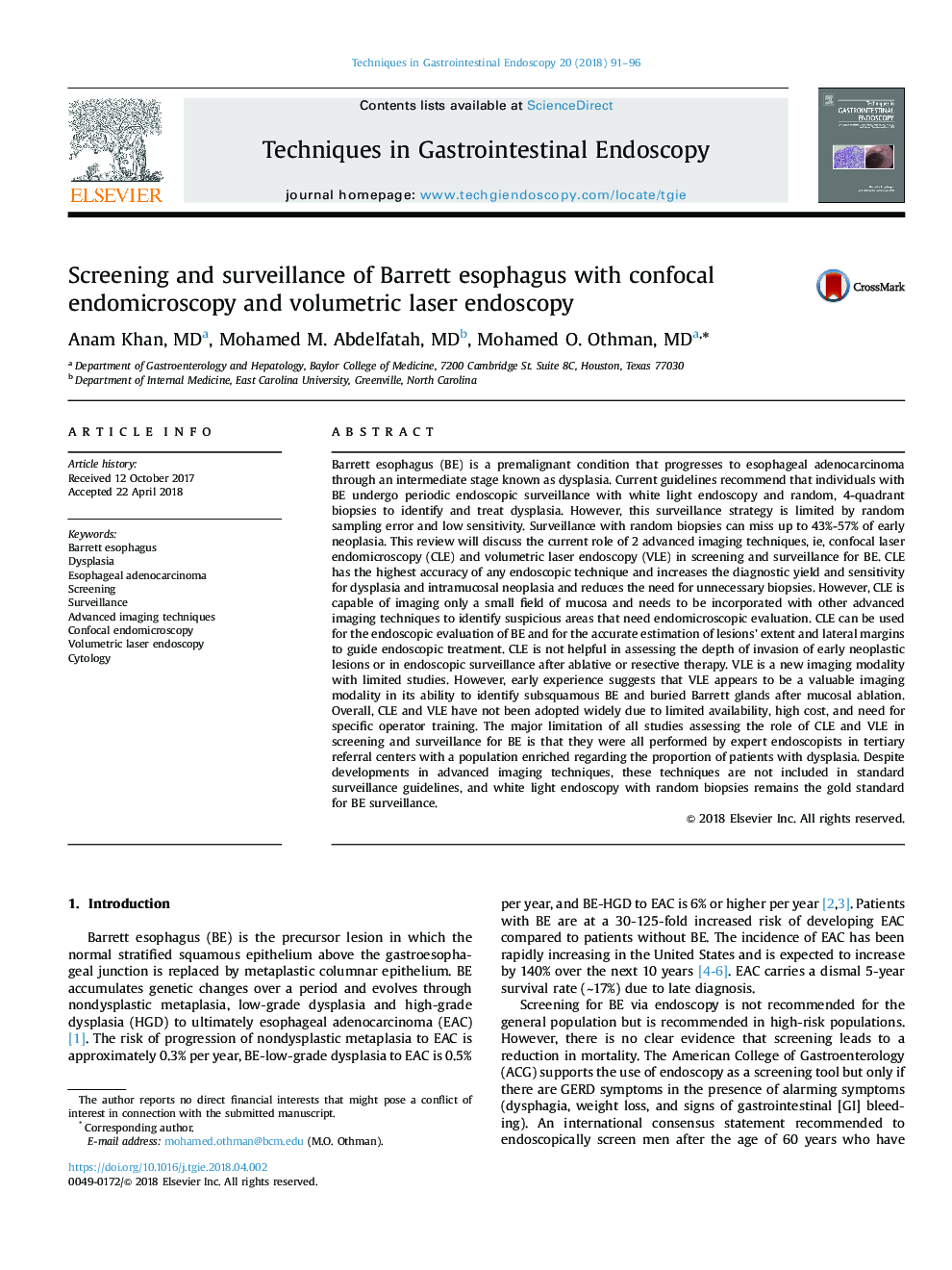| کد مقاله | کد نشریه | سال انتشار | مقاله انگلیسی | نسخه تمام متن |
|---|---|---|---|---|
| 8732231 | 1590409 | 2018 | 6 صفحه PDF | دانلود رایگان |
عنوان انگلیسی مقاله ISI
Screening and surveillance of Barrett esophagus with confocal endomicroscopy and volumetric laser endoscopy
ترجمه فارسی عنوان
غربالگری و نظارت بر مری بافت با آندومیکروسکوپ پاپوکال و آندوسکوپی لیزر حجمی
دانلود مقاله + سفارش ترجمه
دانلود مقاله ISI انگلیسی
رایگان برای ایرانیان
کلمات کلیدی
موضوعات مرتبط
علوم پزشکی و سلامت
پزشکی و دندانپزشکی
بیماریهای گوارشی
چکیده انگلیسی
Barrett esophagus (BE) is a premalignant condition that progresses to esophageal adenocarcinoma through an intermediate stage known as dysplasia. Current guidelines recommend that individuals with BE undergo periodic endoscopic surveillance with white light endoscopy and random, 4-quadrant biopsies to identify and treat dysplasia. However, this surveillance strategy is limited by random sampling error and low sensitivity. Surveillance with random biopsies can miss up to 43%-57% of early neoplasia. This review will discuss the current role of 2 advanced imaging techniques, ie, confocal laser endomicroscopy (CLE) and volumetric laser endoscopy (VLE) in screening and surveillance for BE. CLE has the highest accuracy of any endoscopic technique and increases the diagnostic yield and sensitivity for dysplasia and intramucosal neoplasia and reduces the need for unnecessary biopsies. However, CLE is capable of imaging only a small field of mucosa and needs to be incorporated with other advanced imaging techniques to identify suspicious areas that need endomicroscopic evaluation. CLE can be used for the endoscopic evaluation of BE and for the accurate estimation of lesions' extent and lateral margins to guide endoscopic treatment. CLE is not helpful in assessing the depth of invasion of early neoplastic lesions or in endoscopic surveillance after ablative or resective therapy. VLE is a new imaging modality with limited studies. However, early experience suggests that VLE appears to be a valuable imaging modality in its ability to identify subsquamous BE and buried Barrett glands after mucosal ablation. Overall, CLE and VLE have not been adopted widely due to limited availability, high cost, and need for specific operator training. The major limitation of all studies assessing the role of CLE and VLE in screening and surveillance for BE is that they were all performed by expert endoscopists in tertiary referral centers with a population enriched regarding the proportion of patients with dysplasia. Despite developments in advanced imaging techniques, these techniques are not included in standard surveillance guidelines, and white light endoscopy with random biopsies remains the gold standard for BE surveillance.
ناشر
Database: Elsevier - ScienceDirect (ساینس دایرکت)
Journal: Techniques in Gastrointestinal Endoscopy - Volume 20, Issue 2, April 2018, Pages 91-96
Journal: Techniques in Gastrointestinal Endoscopy - Volume 20, Issue 2, April 2018, Pages 91-96
نویسندگان
Anam MD, Mohamed M. MD, Mohamed O. MD,
